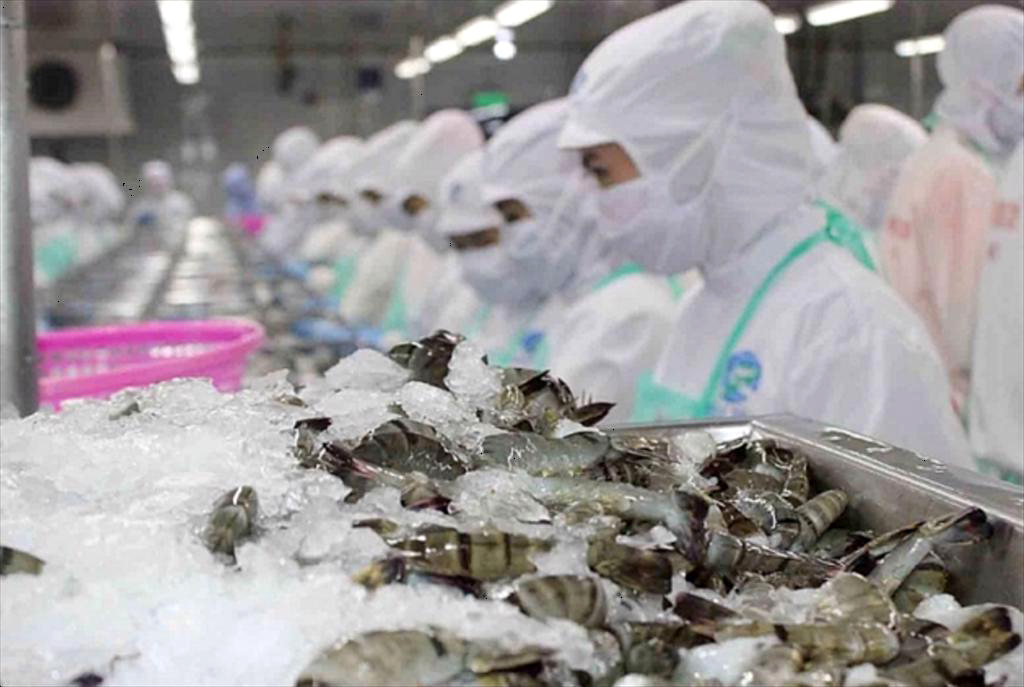Vietnam Seafood
Vietnam’s shrimp exports in first 7 months: Accelerating in Asia, facing heavy pressure from the US
Vietnam’s shrimp exports to the US – the second largest market after China – are under heavy pressure from taxation policies, causing orders from exporters to stagnate. Compared to rivals such as Ecuador (import tariff only 15%) or Indonesia and the Philippines (19%), Vietnam is gradually losing competitiveness with a 20% countervailing duty. The industry is entering a difficult phase as preliminary results of POR19, announced by the US Department of Commerce in June, showed sharply higher anti-dumping duties for many major exporters. If these rates are not adjusted in the final results due in December, Vietnamese shrimp may risk losing access to the US market.
China & Hong Kong continue to lead with USD 710 million (up 78%), accounting for 29% of total shrimp exports. In July alone, exports reached USD 115 million, up 63% year-on-year. Strong recovery in domestic consumption and import demand, particularly for lobster products, along with geographical advantages and low logistics costs, helped Vietnam compete more effectively with rivals.
CPTPP bloc recorded USD 699 million in seven months, up 36%, accounting for 28% of total value. Japan – the largest market within the bloc – reached USD 320 million (up 15%). In July alone, exports to Japan slipped slightly by 1.4% year-on-year as the weak yen continued to weigh on purchasing power. However, Japanese buyers still favor value-added and ready-to-eat products, which helps maintain stable orders.
EU market reached USD 309 million (up 17%), with Germany and France posting strong growth of 28% and 17% respectively. In July, exports to the EU reached USD 57 million, up 21% from the same period last year. The bloc benefits from EVFTA, stable demand as inflation eases, and a preference for value-added processed products.
South Korea imported USD 203 million (up 13%), accounting for 8% of total shrimp exports. This is a stable market thanks to demand for processed shrimp and convenience products for the HORECA channel, with consumption holding steady amid relatively stable domestic economic conditions.

US market: In July 2025, exports reached only USD 63 million, down 29% year-on-year. Cumulatively for 7 months, exports reached USD 404 million, up only 3%. After strong growth in May–June from “tax-avoiding” orders, exports to the US slowed as the 20% countervailing duty on Vietnamese shrimp began to bite, coupled with the risks of high anti-dumping and countervailing duties. Narrower profit margins have forced exporters to reconsider pricing strategies and order structures.
White leg shrimp remains dominant in Vietnam’s export structure.
In the first seven months, white leg shrimp exports reached USD 1.6 billion, accounting for 63% of total shrimp export value, up 8% year-on-year. Black tiger shrimp exports reached USD 260 million (up 5%), accounting for 10%. Other shrimp exports totaled USD 657 million, soaring 117%, driven by frozen shrimp orders from Asian markets.
Outlook: For the full year, shrimp exports could reach USD 3.6–3.8 billion if exporters continue to capitalize on Asian markets, the EU, CPTPP members, and expand value-added products to Japan. However, growth momentum may slow in the second half of the year if the US continues to cut imports from Vietnam due to countervailing duties and trade defense measures. Meanwhile, rivals such as Ecuador, Indonesia, and the Philippines are maintaining lower import tariffs, creating stronger competitive pressure. To sustain growth, Vietnamese exporters need to diversify markets, increase the share of processed products, comply with stringent certification requirements, and develop pricing strategies that align with international policy shifts.
Source: https://seafood.vasep.com.vn/



 Tiếng Việt
Tiếng Việt